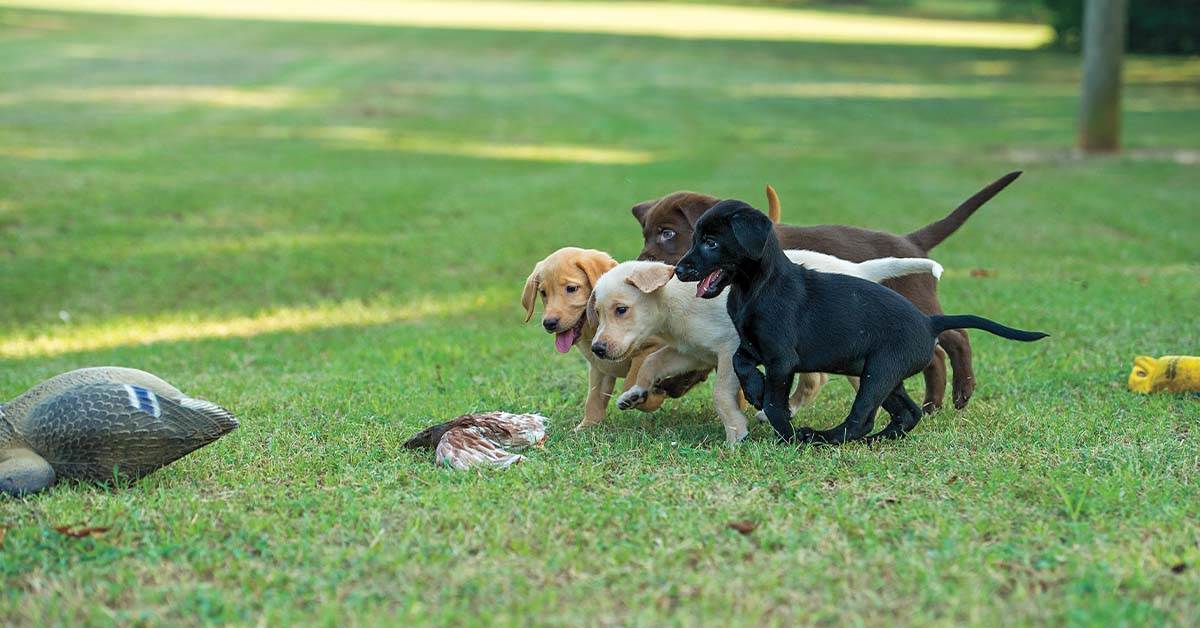Should I Breed My Retriever?
A professional breeder offers advice to help you make the best decision for you and your dog
A professional breeder offers advice to help you make the best decision for you and your dog


You know, it might be fun to have a litter of puppies.
Has any hunter who's owned a good female retriever not entertained that idea? It's a natural inclination, and the process of selecting a sire, breeding your dog, and raising a litter of pups can be tremendously rewarding. But the decision to breed your female is not one to be taken lightly or rushed into. You need to ask yourself some hard questions, and you need to answer them honestly.
"There are a lot of considerations," acknowledges Mary Howley, from Portage, Wisconsin. Her Candlewood Kennels has been synonymous with excellence in Labrador retrievers for more than half a century. "For example, if your goal is simply to get a nice dog for hunting, are you sure you can do better by breeding your female than you can by going to a breeder with a proven track record?" Howley asks. "You can get a great hunting dog from any good field breeder. And if that breeder doesn't have anything, he or she can refer you to someone who does."
Another question you need to ask yourself is whether you're set up, in terms of your household and your lifestyle, to whelp the pups and care for them for the seven weeks or so until they go to their new homes. This includes keeping the whelping area scrupulously clean and giving the pups plenty of exercise once they start to get their legs under them.
"You have to have a market, too," Howley adds, noting that you don't want to find yourself in the position of being stuck with pups you can't sell. "But don't go into it thinking you're going to get rich, either. If you have a large, healthy litter and you're able to sell the pups, you'll probably do OK. But if you have a small litter, or if there are problems that require veterinary attention, all bets are off."
Assuming you have thought it through and concluded that you do, indeed, want to raise a litter from your female, your first order of business, says Howley, should be to obtain the necessary health clearances. "You don't breed a Lab in this day and age," she says emphatically, "without at least checking its hips, eyes, and elbows." Recommended health clearances vary from breed to breed, and the easiest way to get started in this process is to visit the Canine Health Information Center at ofa.org/browse-by-breed.
Once your female is cleared, you can turn your attention to selecting a sire. Unless you've had a stud dog in mind all along, this can be a vexing process. The stud should, like the dam, have the appropriate health clearances. But he should also possess qualities of conformation, temperament, and performance that complement those of your female. Other considerations include the stud fee and the potential difficulty of getting your female to the sire during the few days when she's in standing heat.
Choosing a stud also brings up the subject of bloodlines, which is where things get dicey. Different bloodlines are associated with different characteristics. Someone like Howley can glance at the pedigrees of a pair of Labs and predict with a high degree of confidence how the puppies will turn out. For most of us, though, gaining enough knowledge to make an informed decision can be a lot of work.
"You can't do too much research," Howley insists. Talk to other hunters, professional trainers, field trial and hunt test competitorsanyone and everyone who might be in a position to provide useful information. The internet is a tremendous resource, Howley notes, but you have to apply some judgment in order to sift through the sheer volume of content and distinguish the credible from the fanciful.
"I don't want to talk anyone out of breeding their female," Howley says, "but I think it's important that people do it for the right reasons, and that they realize how much time and effort is involved."
For more on this topic, visit akc.org and read their AKC Guide to Responsible Dog Breeding.
Ducks Unlimited uses cookies to enhance your browsing experience, optimize site functionality, analyze traffic, and deliver personalized advertising through third parties. By continuing to use this site, you agree to our use of cookies. View Privacy Policy